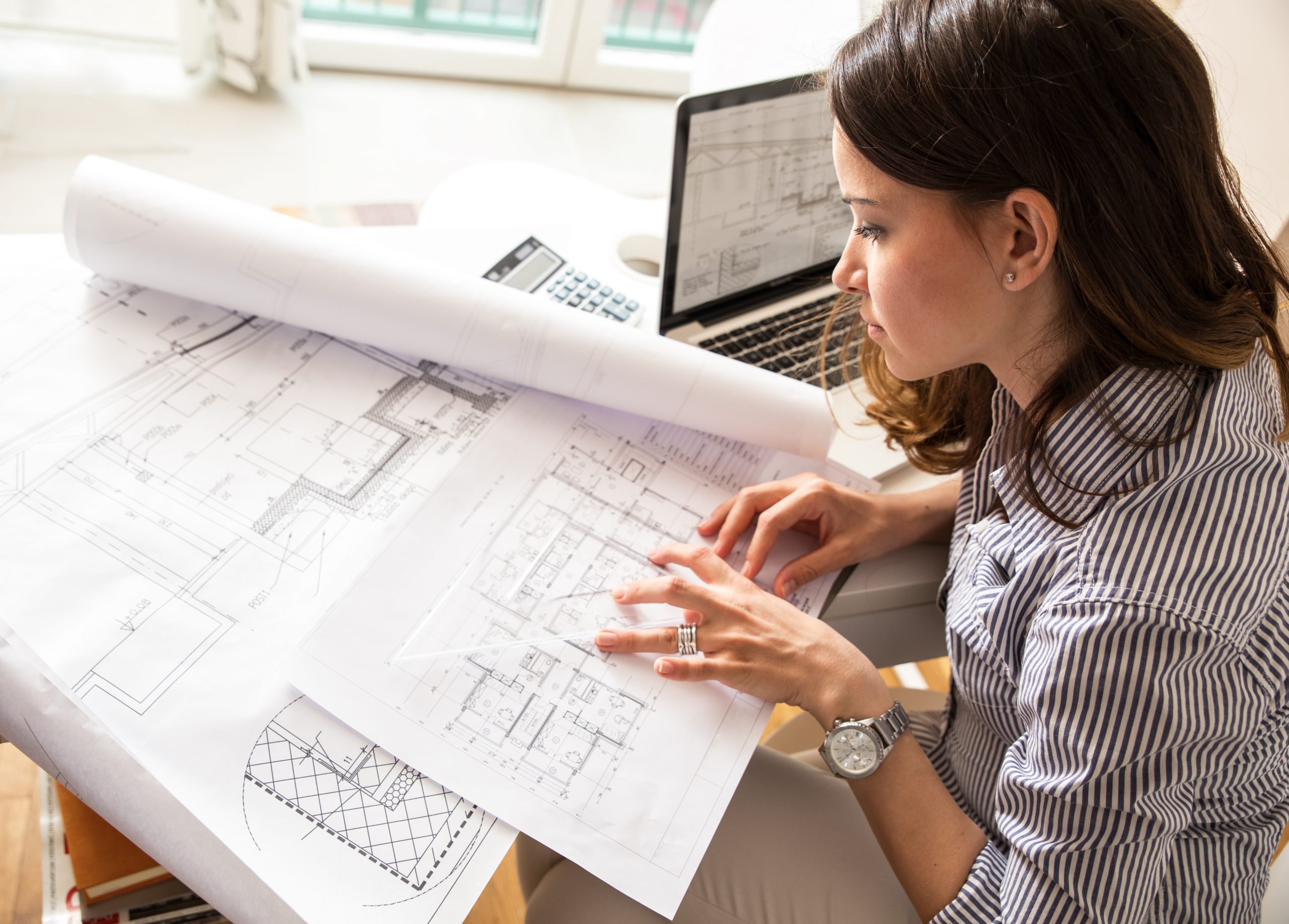Architect Interview Questions You Should Be Equipped to Answer
Architect Interview Questions You Should Be Equipped to Answer
Blog Article
Understanding the Diverse Job Paths Available for Aspiring Architect
As a hopeful Architect, you have a world of occupation paths awaiting you. Each path offers special obstacles and chances to use your creativity and technological expertise. Whether you're drawn to standard architecture or the nuances of lasting layout, there's a specific niche that straightens with your interests. Comprehending these varied options can shape your expert trip, but which direction will you select to discover first?
Traditional Architecture: Designing Frameworks and structures
Typical architecture focuses on developing structures and frameworks that mix capability with visual allure. As you discover this field, you'll appreciate the complex equilibrium in between type and function. You'll discover to attract ideas from historic designs, integrating aspects like balance, products, and craftsmanship. Your styles can show cultural heritage, showcasing local customs while fulfilling modern-day demands.
You'll develop abilities in drafting, model-making, and website evaluation, permitting you to envision and interact your concepts successfully. Engaging with clients, you'll need to comprehend their vision and equate it into viable layouts.
Moreover, constructing codes and sustainability techniques are crucial in your job, ensuring your structures are eco pleasant and risk-free. As you grow in your job, you'll locate chances in residential, commercial, and even repair projects, each offering unique obstacles. Accepting traditional design leads the way for a satisfying career that pays tribute to the past while shaping the future.
Urban Preparation: Shaping Areas and Public Spaces
As a hopeful Architect, you can play a necessary role as a city coordinator, changing how areas function and connect. By employing area engagement methods, you'll guarantee that citizens have a voice fit their environment. And also, incorporating sustainable style principles will certainly assist develop spaces that not only fulfill today's needs however additionally protect the future.
Function of Urban Planners
While many might assume of engineers as the single enthusiasts behind buildings, urban organizers play a crucial duty in forming the wider landscape of neighborhoods and public areas. By collaborating with various stakeholders, you'll aid create parks, transportation systems, and residential locations that advertise social interaction and accessibility. Your expertise in spatial layout and neighborhood dynamics permits you to imagine future growth while maintaining cultural heritage.
Community Interaction Techniques
Reliable area engagement techniques are important for metropolitan coordinators to assure that the voices of homeowners are listened to and valued in the preparation procedure. To foster meaningful dialogue, you ought to prioritize open online forums and workshops where neighborhood members can reveal their ideas and issues. By actively incorporating and listening comments, you'll create spaces that mirror the community's requirements, ultimately leading to more lasting and effective city settings.
Lasting Style Principles
When creating urban rooms, integrating sustainable layout principles is crucial for developing atmospheres that thrive both environmentally and socially. Think about incorporating eco-friendly spaces, like parks and yards, to boost biodiversity and improve air top quality.
Designing with water preservation in mind is also vital-- think of rain yards and permeable surface areas to manage stormwater. Including community participants throughout the planning procedure guarantees that the spaces you create meet their demands and urge social interaction. By welcoming these concepts, you'll contribute to vivid, sustainable metropolitan landscapes that profit everybody.

Landscape Style: Developing Sustainable Outdoor Settings
As you explore landscape style, you'll find important layout concepts that create attractive and practical outside rooms. Sustainable techniques play a crucial role in making sure these environments grow while reducing ecological impact. And also, you'll find a range of career chances that allow you to make a genuine distinction in how individuals engage with nature.
Style Concepts in Landscape
Understanding style concepts in landscape architecture is crucial for producing sustainable outside atmospheres that harmonize with nature. You'll need to ponder elements like proportion, equilibrium, and range to guarantee your styles really feel natural and welcoming. Incorporating native plants not just boosts biodiversity but also decreases water use, making your landscape durable. Think about the flow of area and just how individuals interact with it; pathways and seating areas must welcome expedition and leisure. In addition, take note of seasonal changes, developing with materials that match the surroundings year-round (Architect). By focusing on sustainability and visual appeals, you can create outdoor areas that enhance the neighborhood and promote wellness. Accepting these principles will set a strong foundation for your profession in landscape design.
Lasting Practices Summary
Sustainable techniques in landscape design not only concentrate on appearances however likewise prioritize eco-friendly health and wellness and resource preservation. By integrating indigenous plants, you enhance biodiversity and reduce the demand for chemical fertilizers and chemicals. Implementing efficient watering systems aids preserve water and decreases runoff, safeguarding close-by ecological communities. You can make rooms that promote soil health and wellness, such as exercising and making use of organic products permaculture concepts. In addition, incorporating green framework, like rainfall yards and porous sidewalks, help in stormwater monitoring and decreases city warmth. When you develop outside atmospheres with sustainability in mind, you add to a much healthier world and provide areas that cultivate area connection. Eventually, these techniques guarantee your styles profit both individuals and the atmosphere for many years ahead.
Profession Opportunities Exploration
With a solid structure in lasting methods, landscape architecture uses a selection of occupation paths that allow you to make a purposeful influence on the atmosphere. You could function as a landscape designer, developing aesthetically pleasing and functional exterior spaces, or focus on environmental restoration, helping to restore damaged ecological communities. Urban organizers usually team up with landscape architects to develop eco-friendly areas in city setups, boosting city livability. If you're enthusiastic about education and learning, think about ending up being a landscape design instructor, inspiring future generations. In addition, you could collaborate with nonprofits focused on ecological sustainability or take part in research pop over here to innovate brand-new practices. Each path not only forms beautiful environments but additionally cultivates a healthier planet for future generations.
Sustainable Layout: Concentrating On Eco-Friendly Practices
As you explore your career in design, accepting environmentally friendly methods can establish you apart in a competitive field. Lasting style focuses on creating structures that lessen environmental impact while enhancing owner health. By integrating eco-friendly products, energy-efficient systems, and lasting structure strategies, you'll add to a greener future.
Start by getting knowledge of green certifications like LEED or BREEAM, which can bolster your credentials. Take into consideration just how natural light, ventilation, and thermal efficiency can maximize layout. Collaborate with engineers and environmental professionals to introduce solutions that decrease waste and conserve sources.
Do not forget the value of community involvement-- appealing regional stakeholders can motivate layouts that integrate with the setting. As customers increasingly prioritize sustainability, your know-how in green techniques will certainly not just bring in tasks yet additionally accomplish your interest for responsible architecture. Embrace this important element of the occupation, and view your profession thrive.
Historic Preservation: Protecting and Restoring Social Heritage
While you start on your building journey, consider the important role of historical conservation in preserving our social heritage. This field focuses on the protection and restoration of substantial structures, sites, and structures that inform the tales of our past. By participating in historical conservation, you'll assist safeguard the building tradition that shapes community identification.
As a historic conservation Architect, you'll analyze historic significance and analyze the anonymous condition of frameworks. You'll work very closely with guardians and historians to ensure authentic repair techniques are utilized. This career course permits you to blend creative thinking with research study, allowing you to develop remedies that appreciate initial materials and craftsmanship.
Your job not only adds to sustainability by recycling existing buildings but likewise cultivates a sense of pride within areas. Embracing this path will certainly help you end up being a guardian of background, preserving the stories and appearances that enrich our lives.
Interior Style: Enhancing Indoor Spaces
Historic preservation and interior style both share a dedication to enhancing the developed atmosphere, yet they concentrate on different elements. While historical conservation stresses maintaining a structure's historic and social worth, indoor architecture zeroes in on enhancing interior areas for functionality and appearances.
As an ambitious Architect, you'll locate that indoor style permits you to mix imagination with technological abilities. You'll create rooms that not just look excellent yet also promote comfort and efficiency. This field involves understanding how light, color, and materials interact within a space, affecting mood and usability.
You'll deal with various tasks, from household homes to business workplaces, making certain that each setting fulfills the requirements of its passengers. By prioritizing user experience, you can transform insides right into practical and inspiring rooms, making a substantial influence on just how people communicate with their surroundings. Welcome the chance to improve indoor environments and shape the way individuals live and function.
Industrial Design: Combining Performance With Looks
Industrial design plays an essential duty in producing products that flawlessly mix aesthetic appeals with functionality, ensuring that what you make use of everyday is not just visually appealing yet also sensible. As a hopeful Architect, you might immerse on your own in this field, concentrating on developing every little thing from furniture to customer electronics. Your job includes recognizing individual demands, materials, and making procedures, allowing you to develop innovative services that enhance daily experiences.
In industrial design, you'll often team up with online marketers, engineers, and producers, making certain that your designs are not just lovely however additionally feasible. You'll learn to balance type and feature, focusing on usability without giving up style. By honing your abilities in mapping out, 3D modeling, and prototyping, you'll be well-appointed to bring your concepts to life. This career course provides a dynamic atmosphere where creative thinking fulfills usefulness, making it a rewarding choice for architects thinking about shaping the products of tomorrow.
Regularly Asked Concerns
What Educational Credentials Do I Required to End Up Being an Architect?
To come to be a designer, you'll need a specialist degree in style, normally a Bachelor's or Master's. Furthermore, you'll need to complete an internship and pass the Architect Registration Assessment to practice legitimately.
Are There Qualification Demands for Various Architectural Career Paths?
Yes, there're accreditation requirements for numerous architectural courses. Architect. You'll require to pass examinations, full internships, and sometimes go after specialized training, relying on your selected emphasis, like landscape architecture, metropolitan layout, or historic conservation
What Software Skills Are Essential for Designers Today?

Exactly How Can I Gain Practical Experience While Researching Design?
You can gain functional experience by interning at architectural companies, taking part in layout competitions, offering for community tasks, or collaborating with schoolmates on real-world assignments. These possibilities enhance your abilities and build useful links in the market.
What Work Opportunities Exist Outside Standard Architecture Firms?
You can check out numerous job opportunities outside conventional style companies, like metropolitan preparation, interior decoration, landscape style, building management, realty growth, or even roles in sustainability consulting. Each deals distinct challenges and benefits.
Whether you're attracted to typical architecture or the nuances of lasting layout, there's a niche that lines up with your rate of interests.When making urban spaces, integrating lasting layout concepts is crucial for producing settings that thrive both ecologically and socially.As you check out go to this website landscape design, you'll find crucial design principles that create gorgeous and practical exterior rooms.Recognizing layout concepts in landscape style is essential for creating sustainable outdoor environments that integrate with nature.In commercial layout, you'll frequently team up with marketing professionals, makers, and engineers, guaranteeing that your designs are not just attractive yet likewise possible.
Report this page